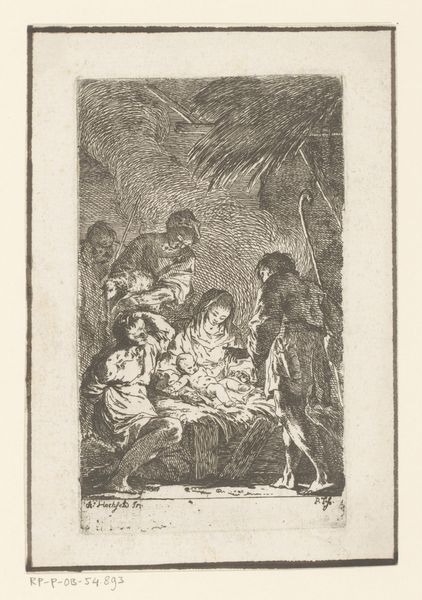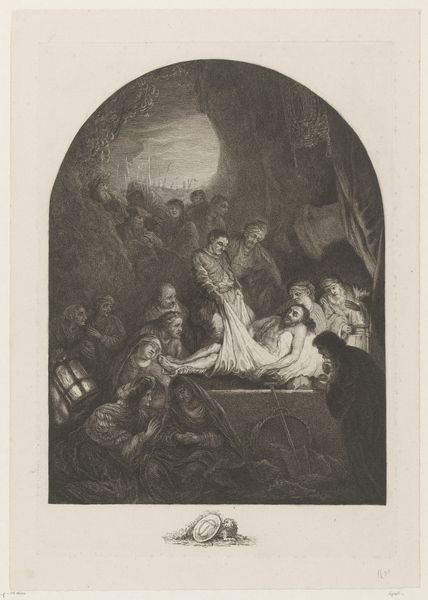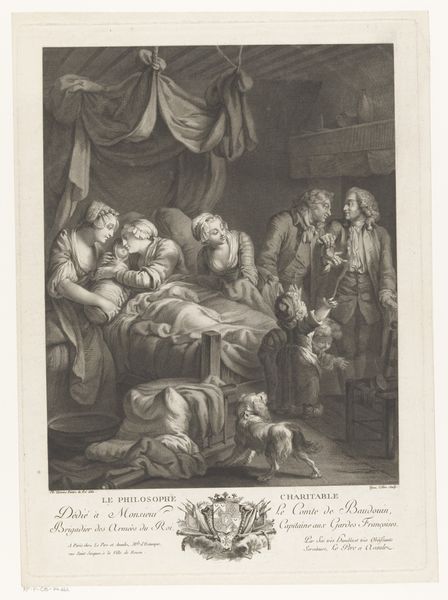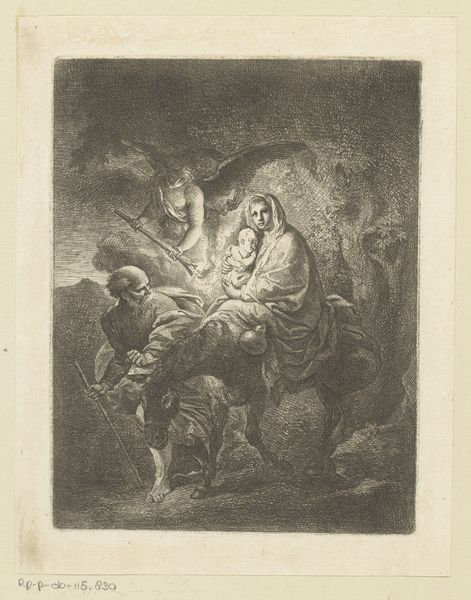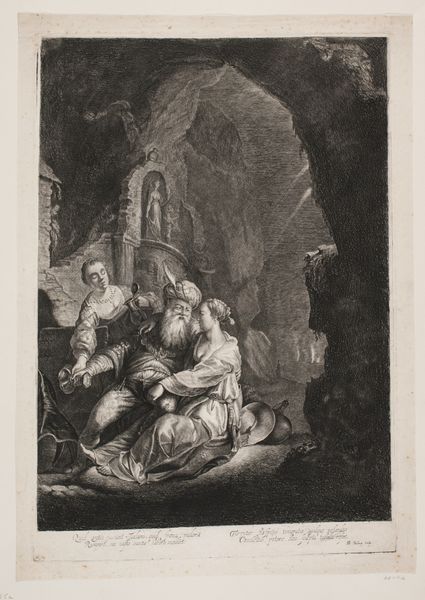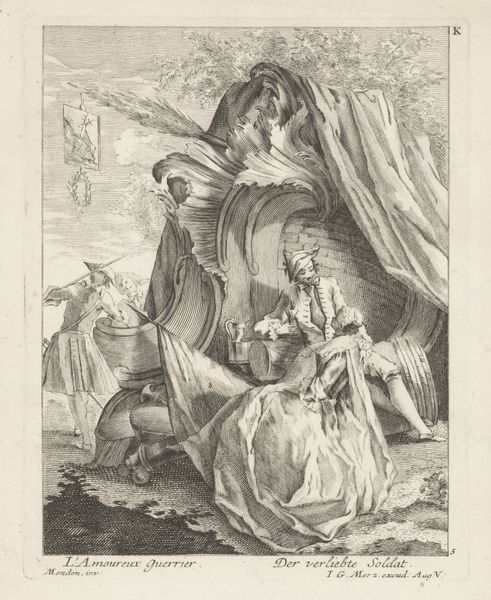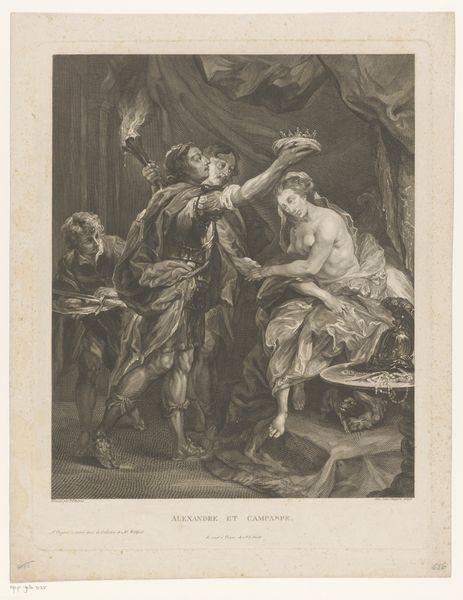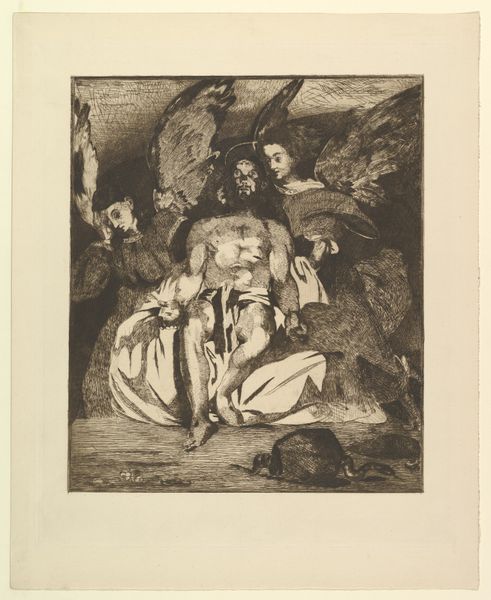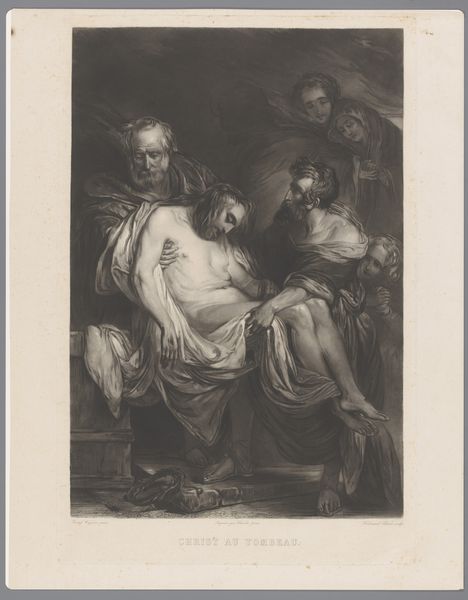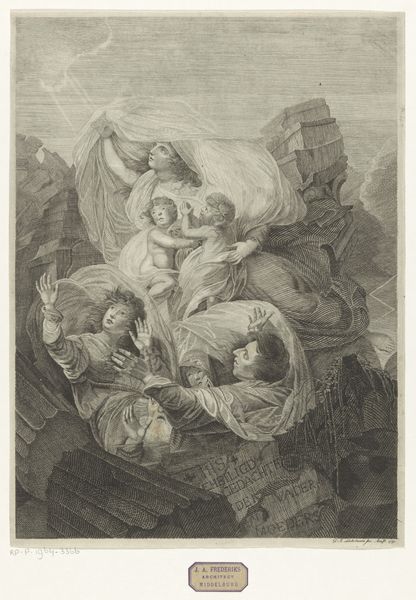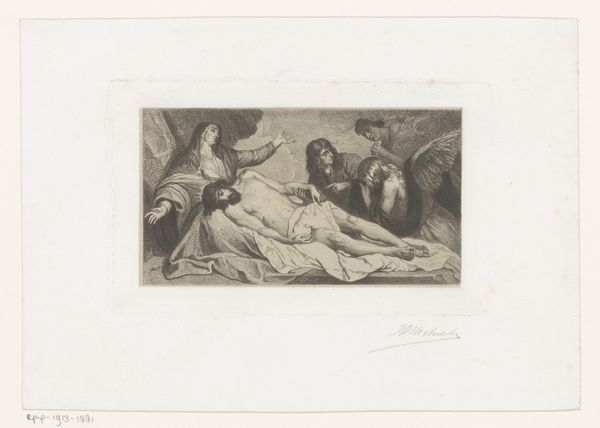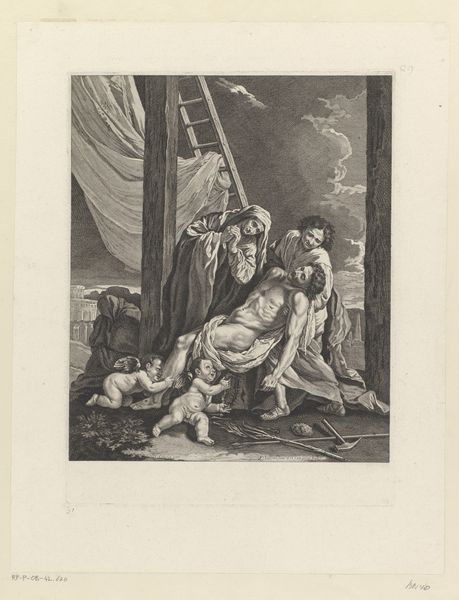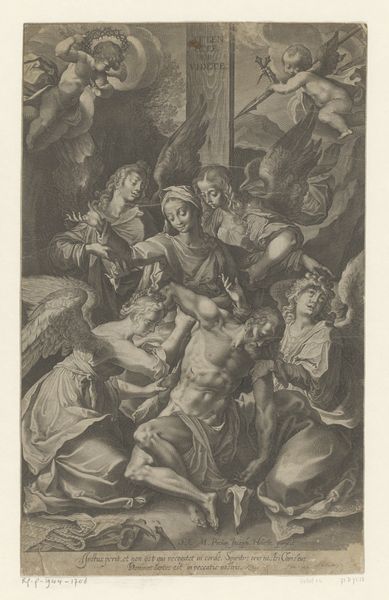
Ouders treffen hun slapende dochter aan in een vissershut 1771
0:00
0:00
Dimensions: height 408 mm, width 320 mm
Copyright: Rijks Museum: Open Domain
Curator: It seems that what we have in front of us is “Ouders treffen hun slapende dochter aan in een vissershut”, from 1771, made with ink and charcoal, on paper. The artist is Jean Baptist Leprince and it resides in the Rijksmuseum. There’s a compelling narrative element to this work, but the figures appear somewhat ghostly. What strikes you most about it? Editor: I'm drawn to the contrast in textures—the rough-hewn nature of the shack versus the soft depiction of the sleeping figure and her linens. What does the material reality of this piece—ink and charcoal on paper—tell us about the social context of its creation? Curator: The choice of drawing, as opposed to a painting, speaks volumes about accessibility and function. Ink and charcoal are relatively inexpensive, and paper allowed for reproducibility. Think about who would have been consuming such images in 1771. Was it for elite collectors or a broader public? And what narrative needs was Leprince responding to? Editor: Perhaps the story itself was meant to be circulated widely. It is very interesting that those are not the "noble" materials generally seen, I wonder if those were available to all social classes. Do the fishing hut setting, the sleeping girl and her concerned parents…do these figures represent archetypes for the intended audience? Curator: The setting places the narrative in a world of labor and resource extraction – the fishery. Look closely. What can you infer from the still-life elements in the bottom left: The basket and its contents? And consider how the scene is staged as a ‘discovery,’ suggesting themes of vulnerability and perhaps even morality, being circulated for a rising merchant class with a growing sense of domesticity and concerns about family. The very act of Leprince creating multiple versions, allowed these bourgeois moral concepts to filter down and to spread, as they were consumed. What do you think? Editor: That’s insightful. I see how the relatively cheapness of this production parallels with the rise of a new social order interested in different stories. Looking at it now I also agree that is meant for the family unit of that time. It puts things in context that otherwise, would have seemed random or disconnected. Curator: Exactly! Examining the materials and their accessibility allows us to unravel not just the story *within* the artwork, but also the story *of* the artwork, its place in the economic and social fabric of its time.
Comments
No comments
Be the first to comment and join the conversation on the ultimate creative platform.
